Search Result
Results for "
gluconeogenesis
" in MedChemExpress (MCE) Product Catalog:
1
Biochemical Assay Reagents
3
Isotope-Labeled Compounds
| Cat. No. |
Product Name |
Target |
Research Areas |
Chemical Structure |
-
- HY-N8141
-
|
|
Others
|
Metabolic Disease
|
|
Regaloside H, a phenylpropanoid glycerol glucoside, is a gluconeogenesis inhibitor. Regaloside H can reduce glucose production in Hepatocytes .
|
-
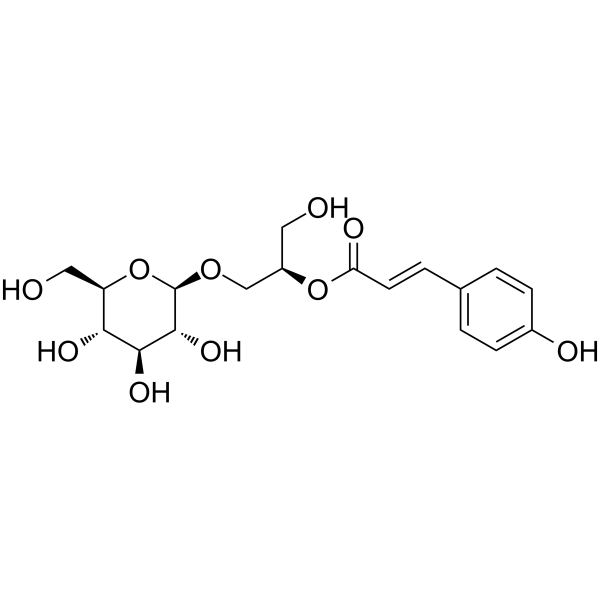
-
- HY-N5083
-
|
|
Others
|
Inflammation/Immunology
|
|
Saponarin is a natural flavonoid isolated from Gypsophila trichotoma, with antioxidant, anti-inflammatory and hepatoprotective activities. Saponarin activates AMPK in a calcium-dependent manner, thus regulating gluconeogenesis and glucose uptake .
|
-

-
- HY-151223
-
|
Triose phosphate
|
Endogenous Metabolite
|
Metabolic Disease
|
|
D-Glyceraldehyde 3-phosphate (Triose phosphate) is a common molecule in living organisms and is an important intermediate in glycolysis and gluconeogenesis, as well as a sugar product of the Calvin cycle. D-Glyceraldehyde 3-phosphate is involved in the biosynthesis of tryptophan and thiamin .
|
-
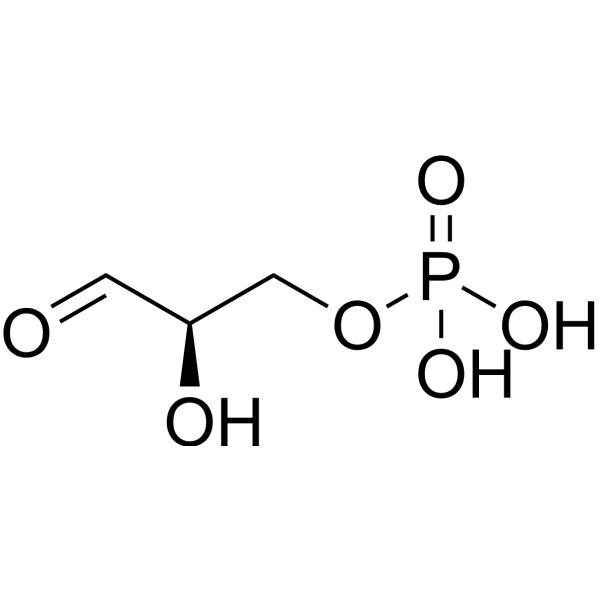
-
- HY-B0511
-
|
Vitamin B7; Vitamin H; D-Biotin
|
Endogenous Metabolite
|
Metabolic Disease
|
|
Biotin, vitamin B7 and serves as a coenzyme for five carboxylases in humans, involved in the synthesis of fatty acids, isoleucine, and valine, and in gluconeogenesis. Biotin is necessary for cell growth, the production of fatty acids, and the metabolism of fats and amino acids .
|
-
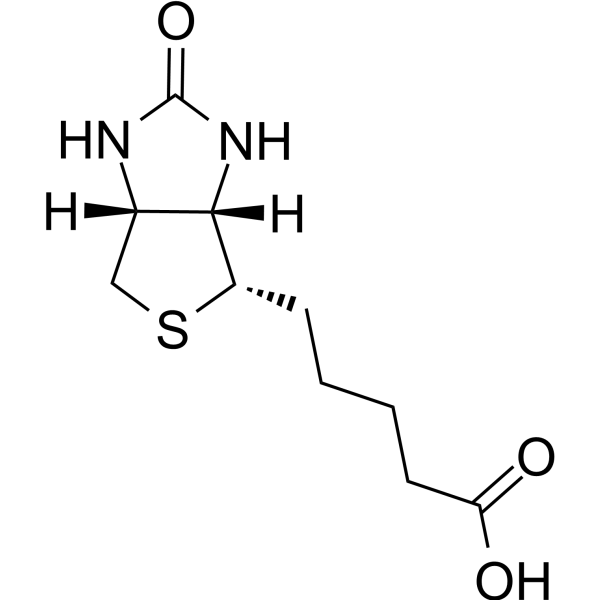
-
- HY-P0082
-
|
Glucagon
|
GCGR
|
Metabolic Disease
|
|
Glucagon (1-29), bovine, human, porcine is a peptide hormone, produced by pancreatic α-cells. Glucagon stimulates gluconeogenesis . Glucagon (1-29), bovine, human, porcine activates HNF4α and increases HNF4α phosphorylation .
|
-

-
- HY-P0082A
-
|
Glucagon hydrochloride
|
GCGR
|
Metabolic Disease
|
|
Glucagon (1-29), bovine, human, porcine hydrochloride is a peptide hormone, produced by pancreatic α-cells. Glucagon hydrochloride stimulates gluconeogenesis . Glucagon (1-29), bovine, human, porcine hydrochloride activates HNF4α and increases HNF4α phosphorylation .
|
-
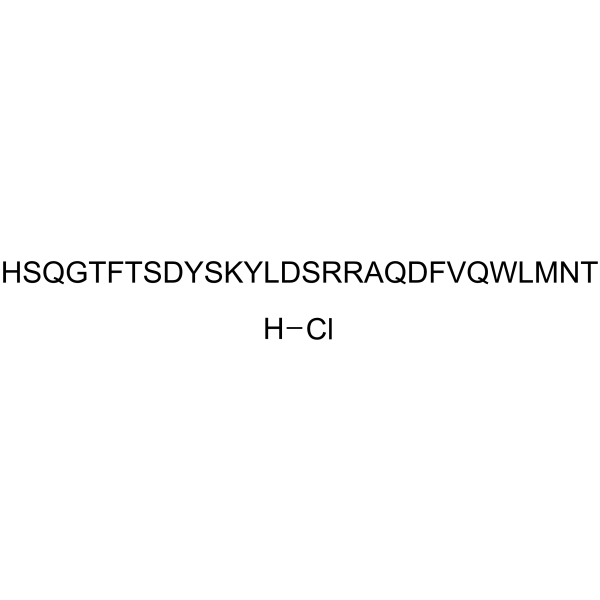
-
- HY-B0511A
-
|
Vitamin B7 sodium; Vitamin H sodium; D-Biotin sodium
|
Endogenous Metabolite
|
Metabolic Disease
|
|
Biotin (Vitamin B7) sodium is a water-soluble B vitamin and serves as a coenzyme for five carboxylases in humans, involved in the synthesis of fatty acids, isoleucine, and valine, and in gluconeogenesis. Biotin sodium is necessary for cell growth, the production of fatty acids, and the metabolism of fats and amino acids .
|
-
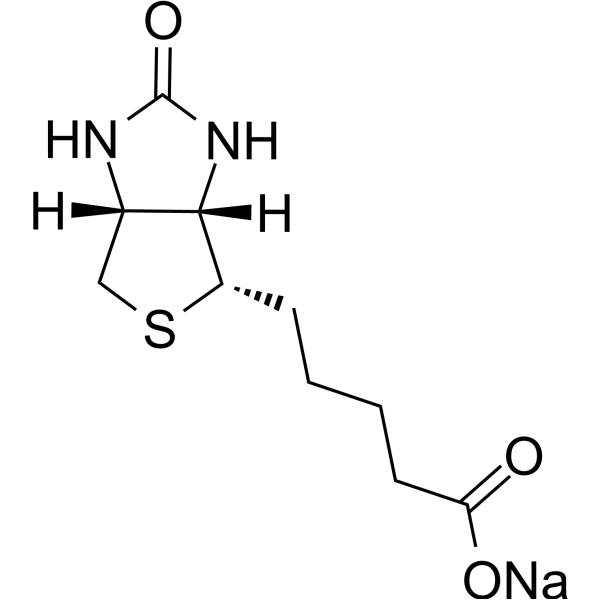
-
- HY-108468
-
|
|
Cryptochrome
|
Metabolic Disease
|
|
KL001 is a first-in-class cryptochrome (CRY, a flavoproteins that are sensitive to blue light, and is involved in the circadian rhythms of plants and animals) stabilizer which specifically interacts with CRY1 and CRY2. KL001 prevents ubiquitin-dependent degradation of CRY, resulting in lengthening of the circadian period. KL001 has the potential to control fasting hormone-induced gluconeogenesis .
|
-

-
- HY-W010382
-
|
2-Oxosuccinic acid
|
Endogenous Metabolite
Reactive Oxygen Species
|
Metabolic Disease
|
|
Oxaloacetic acid (2-Oxosuccinic acid) is a metabolic intermediate involved in several ways, such as citric acid cycle, gluconeogenesis, the urea cycle, the glyoxylate cycle, amino acid synthesis, and fatty acid synthesis, whereby Oxaloacetic acid facilitates the clearance of reactive oxygen species (ROS) and improves mitochondrial function .
|
-
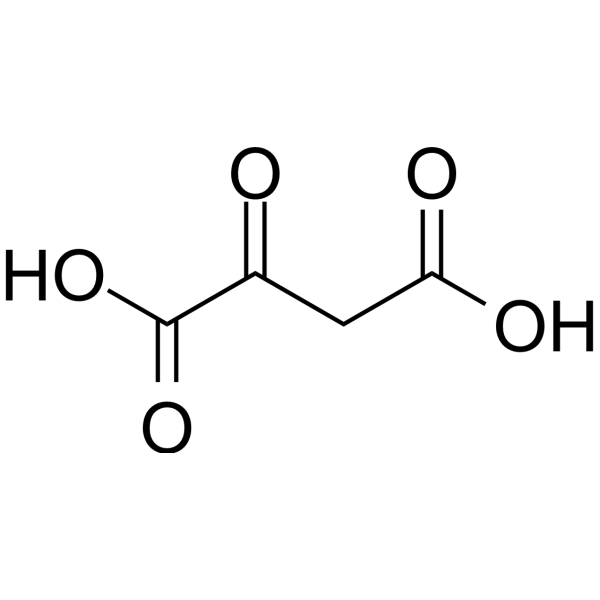
-
- HY-16307
-
MB05032
4 Publications Verification
|
FBPase
|
Metabolic Disease
|
|
MB05032 is a special and efficacious gluconeogenesis inhibitor targeted the AMP binding site of fructose 1,6-bisphosphatase (FBPase) with an IC50 value of 16 nM.
|
-

-
- HY-144231
-
|
|
Others
|
Metabolic Disease
|
|
SIK1 activator 1 exhibited remarkable inhibitory activity on hepatic gluconeogenesis by enhancing the SIK1 phosphorylation and ameliorated the hyperglyceamia of type 2 diabetic mice.
|
-

-
- HY-N3720
-
|
6-Demethoxycapillarisin
|
PEPCK
|
Metabolic Disease
|
|
Demethoxycapillarisin (6-Demethoxycapillarisin) inhibits PEPCK mRNA levels (IC50: 43 μM) by activation of the PI3K pathway. Demethoxycapillarisin decreases glucose production .
|
-

-
- HY-34154
-
|
|
|
|
|
4-(Dimethylamino)phenol increases the extracellular lactate dehydrogenase (LDH) without markedly affecting gluconeogenesis. 4-(Dimethylamino)phenol cannot decreases the ATP content until the membrane becomes permeable to LDH .
|
-

-
- HY-113054
-
|
|
Acyltransferase
Bacterial
Endogenous Metabolite
|
Infection
Metabolic Disease
|
|
DL-Glyceraldehyde 3-phosphate is an intermediate in several metabolic pathways, including glycolysis and gluconeogenesis. DL-Glyceraldehyde 3-phosphate is a potent inhibitor of the growth of E. coli. DL-Glyceraldehyde 3-phosphate is a competitive inhibitor of the acyltransferase .
|
-
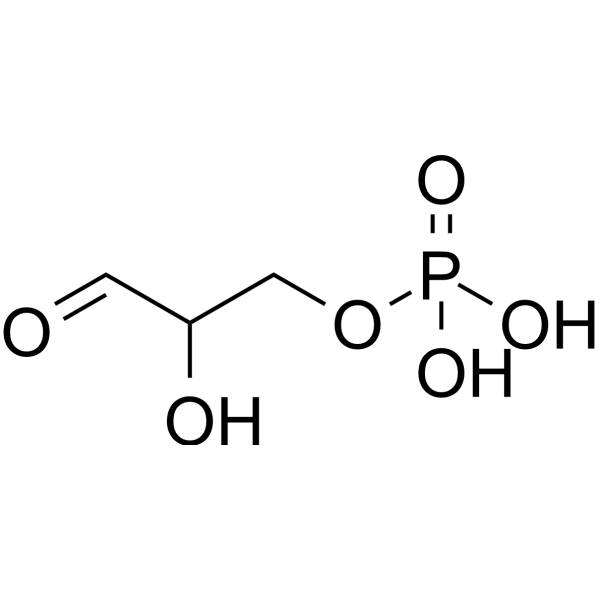
-
- HY-W010382S
-
|
2-Oxosuccinic acid-13C4
|
Endogenous Metabolite
Isotope-Labeled Compounds
|
Metabolic Disease
|
|
Oxaloacetic acid- 13C4 is the 13C-labeled Oxaloacetic acid. Oxaloacetic acid (2-Oxosuccinic acid) is a metabolic intermediate involved in several ways, such as citric acid cycle, gluconeogenesis, the urea cycle, the glyoxylate cycle, amino acid synthesis, and fatty acid synthesis[1][2][3].
|
-

-
- HY-B2099
-
|
1-Butylbiguanide
|
AMPK
|
Metabolic Disease
Cancer
|
|
Buformin (1-Butylbiguanide), a potent AMPK activator, acts as an orally active biguanide antidiabetic agent. Buformin decreases hepatic gluconeogenesis and lowers blood glucose production in vivo. Buformin also has anti-cancer activities and is applied in cancer study (such as, cervical cancer and breast cancer, et al) .
|
-
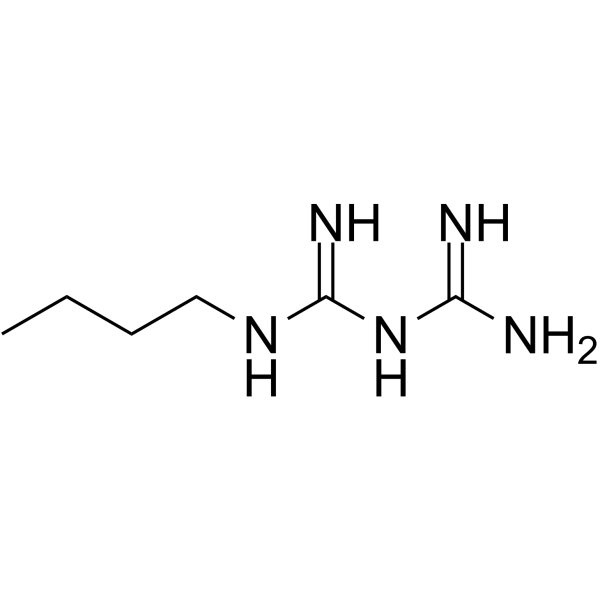
-
- HY-B2099A
-
|
1-Butylbiguanide hydrochloride
|
AMPK
|
Cancer
|
|
Buformin hydrochloride (1-Butylbiguanide hydrochloride), a potent AMPK activator, acts as an orally active biguanide antidiabetic agent. Buformin hydrochloride decreases hepatic gluconeogenesis and lowers blood glucose production in vivo. Buformin hydrochloride also has anti-cancer activities and is applied in cancer study (such as, cervical cancer and breast cancer, et al) .
|
-

-
- HY-P2989
-
|
|
Endogenous Metabolite
|
Metabolic Disease
|
|
Pyruvate carboxylase is a biotin-containing enzyme that catalyzes the HCO3 − and MgATP dependent carboxylation of pyruvate to form oxaloacetate. Pyruvate carboxylase plays an essential role in controlling whole-body energetics through regulation of gluconeogenesis in the liver, synthesis of fatty acids in adipocytes, and insulin secretion in pancreatic β cells .
|
-

-
- HY-B2099S
-
|
1-Butylbiguanide-d9 hydrochloride
|
Isotope-Labeled Compounds
AMPK
|
Metabolic Disease
Cancer
|
|
Buformin-d9 (hydrochloride) is the deuterium labeled Buformin. Buformin (1-Butylbiguanide), a potent AMPK activator, acts as an orally active biguanide antidiabetic agent. Buformin decreases hepatic gluconeogenesis and lowers blood glucose production in vivo. Buformin also has anti-cancer activities and is applied in cancer study (such as, cervical cancer and breast cancer, et al)[1].
|
-

-
- HY-B0528A
-
|
(±)-p-Octopamine hydrochloride
|
Adrenergic Receptor
Endogenous Metabolite
|
Neurological Disease
Endocrinology
|
|
Octopamine ((±)-p-Octopamine) hydrochloride, a biogenic monoamine structurally related to noradrenaline, acts as a neurohormone, a neuromodulator and a neurotransmitter in invertebrates. Octopamine hydrochloride can stimulate alpha2-adrenoceptors (ARs) in Chinese hamster ovary cells transfected with human alpha2-ARs. Octopamine hydrochloride increased glycogenolysis, glycolysis, oxygen uptake, gluconeogenesis and the portal perfusion pressure .
|
-
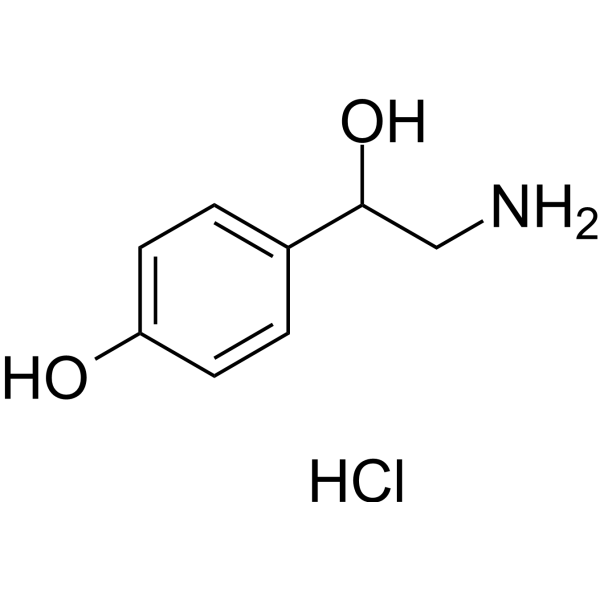
-
- HY-149987
-
|
KHK-IN-3
|
Ketohexokinase
|
Cardiovascular Disease
Metabolic Disease
Inflammation/Immunology
|
|
KHK-IN-3 (Example 1) is a ketohexokinase (KHK) inhibitor. KHK-IN-3 can be used in the study of kidney disease, nonalcoholic steatohepatitis (NASH), diabetes and heart failure. KHK is a rate-limiting enzyme and fructokinase involved in fructose metabolism. KHK catalyzes the phosphorylation of fructose to fructose-1-phosphate (FIP) at the expense of ATP. The lack of feedback inhibition of fructose metabolism triggers the accumulation of downstream intermediates such as lipogenesis, gluconeogenesis, and oxidative phosphorylation .
|
-
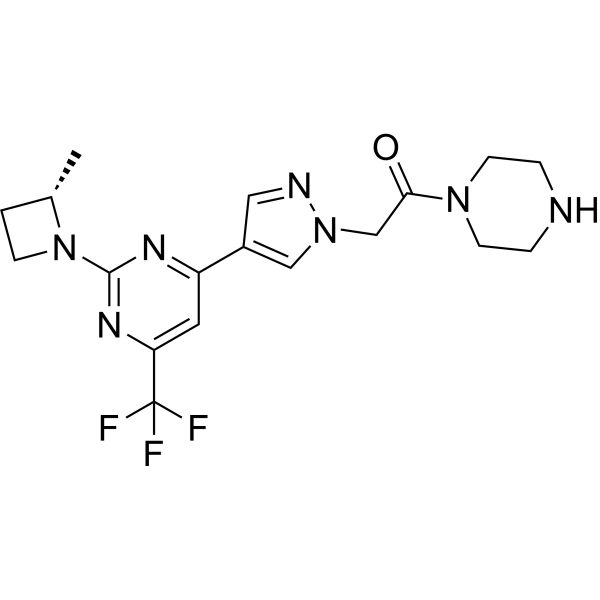
-
- HY-B0528AS
-
|
(±)-p-Octopamine-d4 hydrochloride
|
Adrenergic Receptor
Endogenous Metabolite
|
Neurological Disease
Endocrinology
|
|
Octopamine-d4 (hydrochloride) is the deuterium labeled Octopamine hydrochloride. Octopamine ((±)-p-Octopamine) hydrochloride, a biogenic monoamine structurally related to noradrenaline, acts as a neurohormone, a neuromodulator and a neurotransmitter in invertebrates. Octopamine hydrochloride can stimulate alpha2-adrenoceptors (ARs) in Chinese hamster ovary cells transfected with human alpha2-ARs. Octopamine hydrochloride increased glycogenolysis, glycolysis, oxygen uptake, gluconeogenesis and the portal perfusion pressure[1][2][3].
|
-

-
- HY-137912
-
|
|
Others
|
Endocrinology
Cancer
|
|
trans-Resveratrol-3-O-β-D-Glucuronide is an active metabolite of trans-resveratrol. trans-Resveratrol-3-O-β-D-Glucuronide reduces the proliferation of several intestinal cancer cell line. trans-Resveratrol-3-O-β-D-Glucuronide increases pyruvate production in livers .
|
-

-
- HY-P2820
-
|
|
Endogenous Metabolite
|
Metabolic Disease
|
|
Phosphoglucomutase, Rabbit muscle is often used in biochemical studies. Phosphoglucomutase is an enzyme that can transfer the phosphate group on the α-D-glucose monomer forward from the 1-position to the 6-position or reversely transfer from the 6-position to the 1-position, and promote the glucose-1-phosphate and glucose-6-phosphate Transform each other. Phosphoglucomutase is a key enzyme in glycolysis and gluconeogenesis, and plays an important role in the metabolism of proteins, lipids and nucleic acids .
|
-

-
- HY-N7676
-
|
|
AMPK
HDAC
|
Cardiovascular Disease
Neurological Disease
Metabolic Disease
|
|
Marein has the neuroprotective effect due to a reduction of damage to mitochondria function and activation of the AMPK signal pathway. Marein improves insulin resistance induced by high glucose in HepG2 cells through CaMKK/AMPK/GLUT1 to promote glucose uptake, through IRS/Akt/GSK-3β to increase glycogen synthesis, and through Akt/FoxO1 to decrease gluconeogenesis. Marein is a HDAC inhibitor with an IC50 of 100 µM. Marein has beneficial antioxidative, antihypertensive, antihyperlipidemic and antidiabetic effects .
|
-

-
- HY-P2822
-
|
PGK
|
Endogenous Metabolite
|
Infection
Endocrinology
Cancer
|
Phosphoglycerate kinase, yeast (PGK), namely phosphoglycerate kinase, is a glycolytic enzyme commonly used in biochemical research. Phosphoglycerate kinase can catalyze the reversible transfer of phosphate groups from 1,3-bisphosphoglycerate (1,3-BPG) to ADP to generate 3-phosphoglycerate (3-PG) and ATP. At the same time, it can also participate in gluconeogenesis, catalyzing the opposite reaction to produce 1,3BPGA and ADP. Phosphoglycerate kinase is involved in energy metabolism, interaction with nucleic acid, tumor progression, cell death and virus replication and other related processes .
|
-

-
- HY-14414
-
GSK4112
5 Publications Verification
SR6452
|
REV-ERB
Apoptosis
|
Metabolic Disease
|
|
GSK4112 (SR6452) is a Rev-erbα agonist with an EC50 value of 0.4 μM. GSK4112 can be used as a chemical tool to probe the function of Rev-erbα in transcriptional repression, regulation of circadian biology, and metabolic pathways .
|
-

-
- HY-108743
-
|
|
Insulin Receptor
|
Endocrinology
|
|
Insulin degludec is an ultra-long-acting form of insulin used for the research of hyperglycemia caused by type 1 and type 2 dabetes. Insulin degludec shows binding efficiency with an IC50 value of 19.59 nM for insulin receptor. Insulin degludec can be used for the research of type 1 and type 2 diabetes .
|
-

-
- HY-N3628
-
-

| Cat. No. |
Product Name |
Type |
-
- HY-P2989
-
|
|
Biochemical Assay Reagents
|
|
Pyruvate carboxylase is a biotin-containing enzyme that catalyzes the HCO3 − and MgATP dependent carboxylation of pyruvate to form oxaloacetate. Pyruvate carboxylase plays an essential role in controlling whole-body energetics through regulation of gluconeogenesis in the liver, synthesis of fatty acids in adipocytes, and insulin secretion in pancreatic β cells .
|
| Cat. No. |
Product Name |
Target |
Research Area |
-
- HY-P0082
-
|
Glucagon
|
GCGR
|
Metabolic Disease
|
|
Glucagon (1-29), bovine, human, porcine is a peptide hormone, produced by pancreatic α-cells. Glucagon stimulates gluconeogenesis . Glucagon (1-29), bovine, human, porcine activates HNF4α and increases HNF4α phosphorylation .
|
-
- HY-108743
-
|
|
Insulin Receptor
|
Endocrinology
|
|
Insulin degludec is an ultra-long-acting form of insulin used for the research of hyperglycemia caused by type 1 and type 2 dabetes. Insulin degludec shows binding efficiency with an IC50 value of 19.59 nM for insulin receptor. Insulin degludec can be used for the research of type 1 and type 2 diabetes .
|
-
- HY-P0082A
-
|
Glucagon hydrochloride
|
GCGR
|
Metabolic Disease
|
|
Glucagon (1-29), bovine, human, porcine hydrochloride is a peptide hormone, produced by pancreatic α-cells. Glucagon hydrochloride stimulates gluconeogenesis . Glucagon (1-29), bovine, human, porcine hydrochloride activates HNF4α and increases HNF4α phosphorylation .
|
-
- HY-P2989
-
|
|
Endogenous Metabolite
|
Metabolic Disease
|
|
Pyruvate carboxylase is a biotin-containing enzyme that catalyzes the HCO3 − and MgATP dependent carboxylation of pyruvate to form oxaloacetate. Pyruvate carboxylase plays an essential role in controlling whole-body energetics through regulation of gluconeogenesis in the liver, synthesis of fatty acids in adipocytes, and insulin secretion in pancreatic β cells .
|
| Cat. No. |
Product Name |
Category |
Target |
Chemical Structure |
| Cat. No. |
Product Name |
Chemical Structure |
-
- HY-W010382S
-
|
|
|
Oxaloacetic acid- 13C4 is the 13C-labeled Oxaloacetic acid. Oxaloacetic acid (2-Oxosuccinic acid) is a metabolic intermediate involved in several ways, such as citric acid cycle, gluconeogenesis, the urea cycle, the glyoxylate cycle, amino acid synthesis, and fatty acid synthesis[1][2][3].
|
-

-
- HY-B0528AS
-
|
|
|
Octopamine-d4 (hydrochloride) is the deuterium labeled Octopamine hydrochloride. Octopamine ((±)-p-Octopamine) hydrochloride, a biogenic monoamine structurally related to noradrenaline, acts as a neurohormone, a neuromodulator and a neurotransmitter in invertebrates. Octopamine hydrochloride can stimulate alpha2-adrenoceptors (ARs) in Chinese hamster ovary cells transfected with human alpha2-ARs. Octopamine hydrochloride increased glycogenolysis, glycolysis, oxygen uptake, gluconeogenesis and the portal perfusion pressure[1][2][3].
|
-

-
- HY-B2099S
-
|
|
|
Buformin-d9 (hydrochloride) is the deuterium labeled Buformin. Buformin (1-Butylbiguanide), a potent AMPK activator, acts as an orally active biguanide antidiabetic agent. Buformin decreases hepatic gluconeogenesis and lowers blood glucose production in vivo. Buformin also has anti-cancer activities and is applied in cancer study (such as, cervical cancer and breast cancer, et al)[1].
|
-

Your information is safe with us. * Required Fields.
Inquiry Information
- Product Name:
- Cat. No.:
- Quantity:
- MCE Japan Authorized Agent:





































